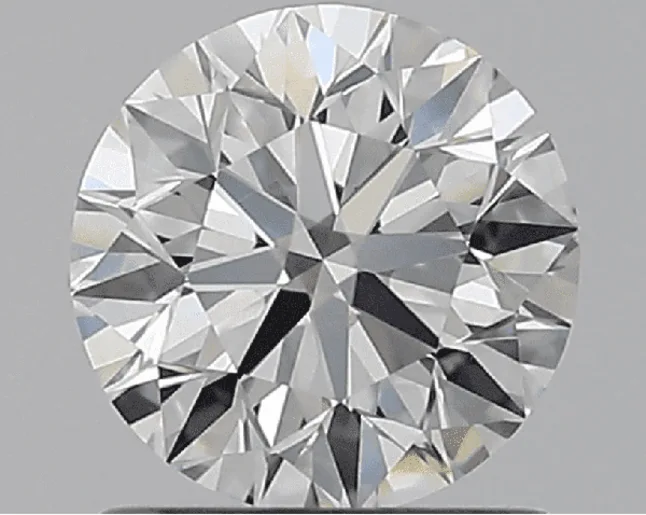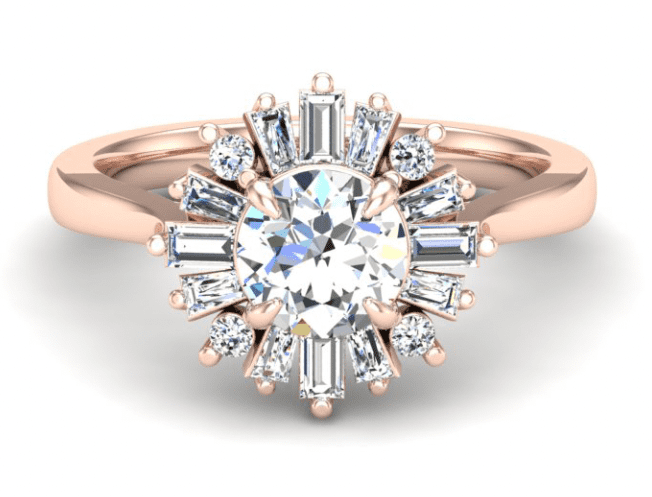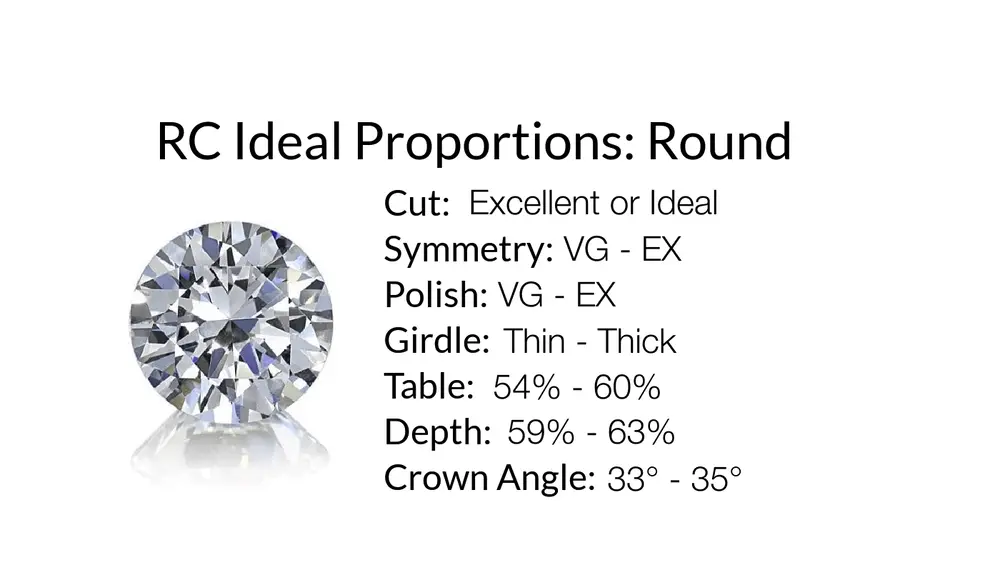Round Cut Diamonds buying guide
Okay so close your eyes and imagine the most utterly stunning, picturesque diamond you can… is it ridiculously sparkly? Is it absurdly large?! Is it perfectly round??? For most, this is exactly what comes to mind! Have you ever really wondered what a round cut diamond is though? And why is it the ideal diamond shape that we think of? If so, then this article is written just for you! I have all the deets, including the interesting history and fun facts to know, about these iconic round-shaped gems. If you weren’t before, you are now about to become a round-cut diamond pro.
What is a Round Cut Diamond?
Short answer - a round cut diamond is the final shape of a finished diamond once it is cut and polished from its original rough form. Most round-cut diamonds will have 57 or 58 facets (the flat faces cut onto a gem). All of these facets are what allow light to reflect perfectly around the inside diamond - giving us the extreme brilliance we know and love our diamonds for. This is why the modern round cut diamond is also identified as a round brilliant cut, or sometimes even referred to as a full cut.
Round brilliant cut diamonds are easily the most popular gemstone on the market - in large part due to the amazing brilliance level, but also because this shape is timeless, classy, and versatile. We can use round cut diamonds for basically any piece of jewelry you can think of, including (but not limited to) - engagement rings, casual rings, necklaces, bracelets, earrings, tiaras, chains, pendants, grills, etc. The downside of opting for a round brilliant cut you may ask? Well, since they are so popular and in such high demand, the prices for these round diamonds will be slightly higher than the price of a similar, fancy-shaped (or non-round) diamond, would be.
And of course, because this shape is in such high demand, a specific grading system was created using percentages and degrees and mathematical equations to measure the symmetry and proportions of round brilliant cut diamonds. This not only helps manufacturers be able to cut the exact angles needed for perfect brilliant diamonds, but it also allows us consumers to know the quality of the cut of the diamond we are buying. Win-win!
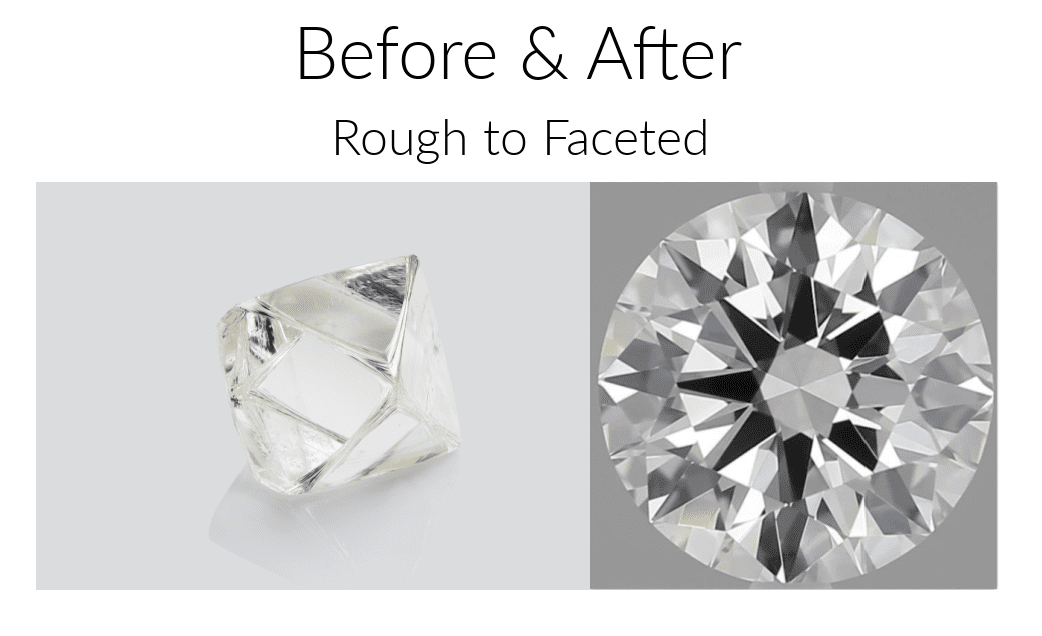
Something else worth mentioning is that in order for a cutter to obtain a round shape from the rough diamond, a lot of the original stone is cut away - I am talking 40 to 60 percent of the original diamond gone once finished... which is crazy right?! Skilled cutters will try to retain as much carat weight as possible of course, but sometimes - and especially with larger, rarer diamonds, the cutter will opt to create a fancy-shaped diamond that follows the natural silhouette of the stone. This is why very large, extra valuable diamond rough typically will not be cut into a round brilliant shaped gem (unless the round shape is the most weight saving!).
The History of the Round Cut
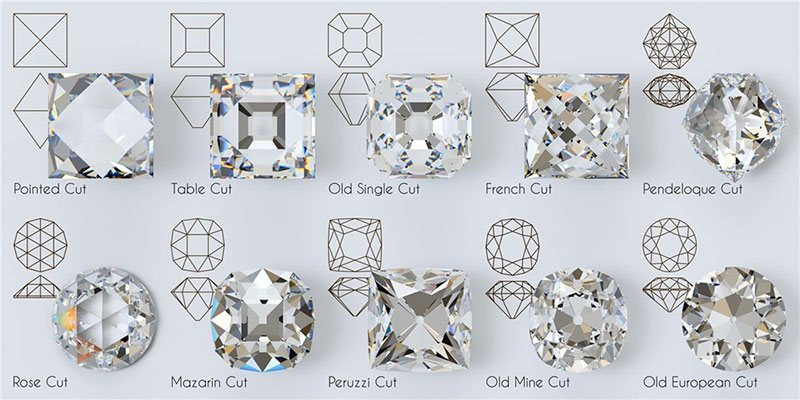
The First Cut: So how did we get to the point of round brilliant cuts being the dominant diamond shape on the market? Well, it actually took about 500 years of diamond cutting innovation to reach what we now know. In fact, the very first diamond cut was called the point cut…and it did indeed look like a point! It resembled a pyramid, or one side of the natural octahedral shape of a diamond…and was very trendy throughout the fifteenth century.
The Table Cut: The next step in diamond cutting was to remove the top point, creating a flat square table facet instead. And sometimes a flat bottom might also be cut onto the diamond - creating a square within a square look. Mostly though the table cut really enhanced the amount of light and brilliance a diamond reflected compared to the point cut (but still nowhere near what we now have).
The Rose Cut: The rose cut was hugely popular from the 16th - 19th century…and is gaining traction again today as a popular vintage diamond cut. Rose cuts tend to be flatter but have triangle facets (which we still use) that come to a point up top producing a higher level of brilliance than had ever been seen up to this period.
The Single Cut: This cut is basically the foundation of today’s modern round brilliant diamond. The shape of the single cut is based on the diamond’s natural octahedral shape but only has a modest 8 facets. Smaller diamonds might still be cut into single cuts even today!
The Old-Mine and Old European Cuts: These two vintage cuts are considered some of our earliest brilliant cuts. The old-mine actually has the same 58 facets as our current round cuts do but is cushion-shaped with the bottom half being much deeper (so it doesn’t reflect with the same vivid brilliance we now have). And then the old European cut was the first to give us our circular-shaped outline used in later designs. These two together are essentially the core of our modern round brilliant cut diamond!
Round Cut Diamond Fast Facts
Whether you are looking for helpful round cut diamond insight or some fast facts for trivia night - this list has everything you need to know about our brilliant circular-shaped stones!
- The most popular shaped diamond sold every year.
- The most expensive of the diamond shapes.
- The most brilliant, sparkly diamond silhouette with 57 or 58 facets.
- Up to 60% of the diamond’s natural rough is lost when being cut into a round-shaped gem.
- Round diamonds have their own specific cut grading method for calculating the quality of the overall finished cut.
- Readily available in calibrated sizes for easy jewelry design.
- Will hide blemishes and inclusions better than other fancy cuts.
- Versatile shape that can be used in multitudes of jewelry design.
- A classic, timeless, elegant diamond shape that will always be en vogue.
And that is just about everything you could want to know about round cut diamonds! These are beautifully shaped stones that put the vivid brilliance up front and center. As the most popular silhouette of diamond, and basically exactly what we imagine the perfect diamond to be, the round brilliant cut is a beloved shape that is here to endure the test of time.
